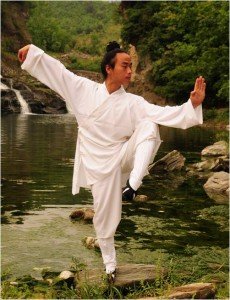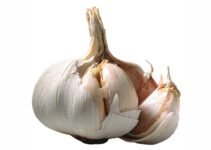Tai Chi Chuan or Taijiquan is a Chinese martial art from Neijia-Quan martial family. It is a fighting style which involves taking your opponent energy and making it an energy emission through your body. This energy emission is called Fa Jing or explosion. This can be done only in a state of total relaxation and to connect the entire structure of the body such acts as a whole.
In the West we tend to think of Tai Chi only as the milder version of more aggressive martial arts (e.g.: Kung-Fu). This erroneous thinking about Tai Chi has North Americans of all ages and abilities missing out on an extraordinary powerful yet simple tool to enhance health, vitality and longevity. People practice Tai Chi in Orient for centuries to maintain health and fitness, and now this form of martial arts gaining popularity in the West.
Over the last 20 years you may have noticed the emergence of early morning Tai Chi practices in your neighborhood parks, beaches, and open spaces. Tai Chi’s popularity is growing rapidly, largely due to the many health benefits linked to it and the ease with which everyone can participate. Practicing Tai Chi Chuan you should exercise both, externally and internally, physically and mentally, trying to keep the balance and unity of outer and inner part of the body.
Only by imitating the movements of masters in our teaching stuff, you will find that your emotion, which is used to be up and down, calms down and self-control becomes an easy thing. You will become aware of the great benefit that is relaxation, a thorough relaxation. It is a very practical way for you to refresh from tension and exhaustion.
Tai Chi, A Healthy Way to Fight Stress (video)
Tai Chi, can improve successfully symptoms of depression (reduces stress and anxiety), raising also the level of confidence of practitioners, confirmed a recent study. It is said that Tai Chi long improves mood and creates a sense of mental well-being.
And to prove that, we can look to both ancient wisdom and modern science to confirm Tai Chi’s health benefits. After being introduced to North America in ‘60s Tai Chi was quick to garner the attention of Western medical researchers and a database of the health benefits of this ancient martial art continues to swell today.
Tai Chi can be used to manage a variety of chronic conditions:
Reduce disability and fatigue in rheumatoid arthritis.
Reduce pain associated with osteoarthritis.
Improve balance in old adults; prevents falls.
Improve quality of life for people suffering from fibromyalgia.
Reduce cardiovascular risk factors.
Increase glucose control in diabetics.
Reduce tension headaches in constant suffer.
Reduce psychological stress.
It requires, however, as Tai Chi to be analyzed in more detail, to get all the benefits. A more detailed analysis of physiological and psychological effects of Tai Chi exercises could lead to new approaches able to promote health, to treat certain chronic diseases and to better explain the mechanisms behind various forms of alternative medicine.
But let’s see what exactly that Tai Chi is? Tai Chi is considered a body mind exercise that incorporates elements of movement and meditation and is often referred to as the international martial act.
Tai Chi literally translates as “supreme ultimate being” or “supreme ultimate fist” and has been used in China for thousands of years. Today, Tai Chi is becoming an antidote to the high-paced stressful life.
There are several different styles of Tai Chi named for the families that developed and passed it on through generations. The most common styles are: Yang; Chen; Wu; Sun Hao (Wu Shi); Hu Lei.
Cheng is the oldest style but Yang is the most widely practiced today. All Tai Chi styles share the same philosophical framework and many points of practice.
Tai Chi Principles
The two main principles are: Energy acquisition and Issuing of energy.
Other principles:
Fluidity: – in Tai Chi, each movement is born from the previous one, with no gasps and stops.
Yin-Yang balance: – between hardness and flexibility; between advance and retreat; between inspiration and expiration.
Circularity and limb movements: – members must always keep a circular to connect the entire body. Energy rises from the ground by legs to hands and is unloaded in fight trough explosion.
Relaxed but attentive: – always attentive you are aware of everything around you, and relaxation is very important for the energy to move freely.
 The ultimate goal of Tai Chi is to cultivate life force, to exercise, to understand the inner structure of the body, and to focus the mind. Every style includes attention to posture, breathing, and mental focus.
The ultimate goal of Tai Chi is to cultivate life force, to exercise, to understand the inner structure of the body, and to focus the mind. Every style includes attention to posture, breathing, and mental focus.
Tai Chi requires no equipment and can be practiced anywhere, anytime. Actually, it is not fully known by what mechanism Tai Chi works such diverse healing miracles. The gentle Tai Chi movements use the muscles that promote the flow of blood and lymph, which increases the efficiency of the immune, digestive, endocrine, and other systems.
The meditation brings mental calmness and initiates a relaxation response that reduces the heart rate and blood pressure.
Deep breathing increases the flow of oxygen and nutrient rich blood to the brain to energize and infuse vitality.
QI is often referred to as life force or universal energy and Tai Chi is recognized as one of the foremost ways to cultivate it. The gentle, slow movements, deep breathing, and relaxation is said to generate and move QI through the body, providing nourishment and healing.



